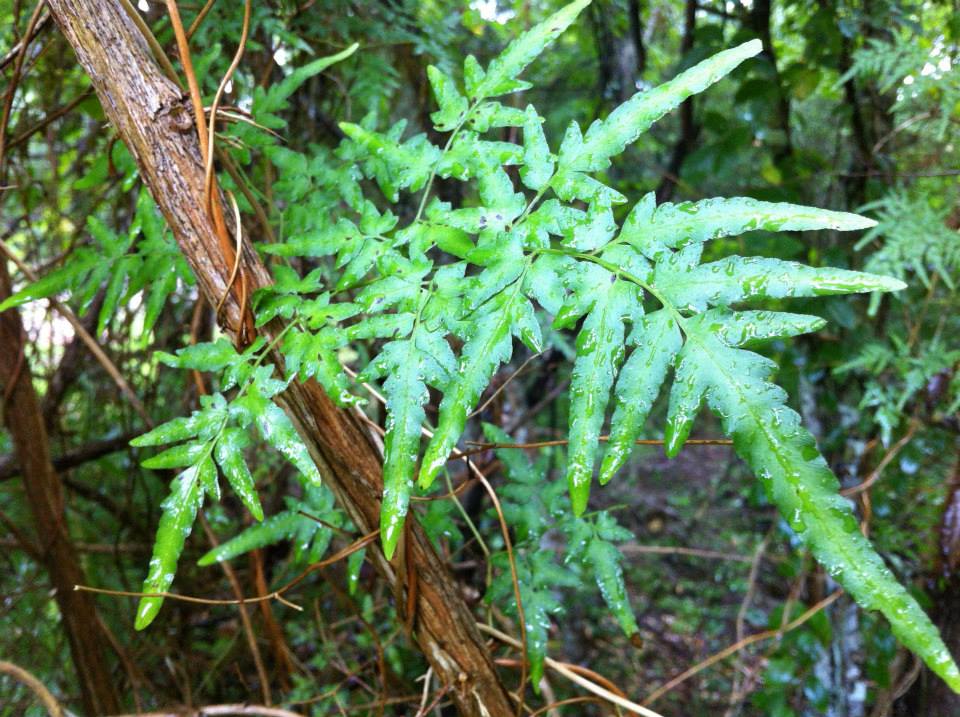Lygodium japonicum (Japanese climbing fern)

As its name suggests, this member of the Schizaeaceae family was brought to the United States from Japan in 1932 (MacDonald et al. 2008, Wunderlin and Hansen 2008). It is native to Asia and Australia and was introduced into the United States for ornamental purposes. Since its introduction, it has established itself in the southeastern United States, including Florida where it is considered a Category I noxious weed by FLEPPC (Minogue et al. 2009). Lygodium japonicum can grow in many habitats including full sun, shade, damp and eitherdisturbed or undisturbed areas. The fern forms dense layers that outcompete other plants and prevent native plant seeds from germinating (MacDonald et al. 2008). Because it has below ground rhizomes, it can withstand frost and can therefore establish in regions further north (Minogue et al. 2009).
Lygodium japonicum is a perennial fern that is vine-like and can grow to be 90 feet long. Leaves are arranged oppositely on the vine. Vines and rhizomes are both thin and wiry, but rhizomes are black whereas the vines may be green, orange or black in color (MacDonald et al. 2008). Vines branch off from the underground rhizomes and invade other plants. Fronds are brown to tan colored. Fertile fronds are smaller with marginal projections and have double rowed sporangia. Spores are wind dispersed (MacDonald et al. 2008).
Japanese climbing fern can reproduce by spores or vegetatively. Spores are small, numerous and their longevity allows for the plant to reproduce easily. L. japonicum is also able to self-fertilize (Minogue et al. 2009). Because lower rachis contain sterile pinnae, self-fertilization is more common for the plant as the rachis grows and produces more fertile spores. Vegetatively, L. japonicum grows via its rhizomes underground. With rhizomes a few centimeters below the surface, Japanese climbing fern can then withstand frosts and fire and resprout even if above ground growth is killed (Minogue et al. 2009).
Control of Japanese climbing fern is important in order to maintain natural communities and may include methods of prevention, cultural, chemical or mechanical control. Biological control has been considered, however now naturally occurring agents have been identified as possible control agents for the fern in the United States (Minogue et al. 2009). Neomusotima fuscholinealis feeds on Japanese fern in its native range, but cannot yet be released in the invasive range until further tests ensure proper environmental safety of doing so (Minogue et al. 2009, Pemberton, 2002). Preventative and cultural techniques focus on trying to limit transportation of spore-containing material. It is thought that pine straw harvested on pine plantations may be the source of introducing the fern in to new communities (Minogue et al. 2009, Zeller and Leslie 2004). Chemical treatments are most effective when applying them prior to high spore release, ideally July to October (Minogue et al. 2009).
Links:
http://plants.ifas.ufl.edu/node/639
http://edis.ifas.ufl.edu/fr280
http://www.florida.plantatlas.usf.edu/Plant.aspx?id=1559
http://www.issg.org/database/species/ecology.asp?si=999